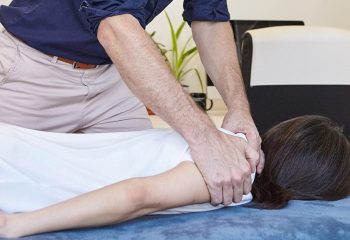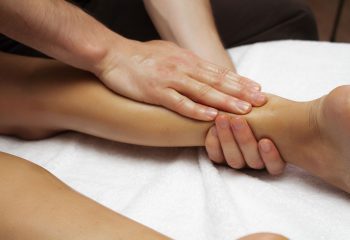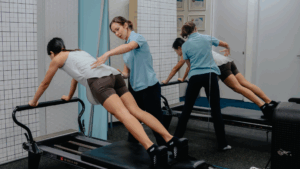Are you tired of battling persistent lower back pain? At City Osteopathy & Physiotherapy, we’re here to guide you through effective physiotherapy exercises and share insights on how they can help alleviate your discomfort. In this comprehensive guide, we’ll dive into the causes of lower back pain, the most effective physiotherapy exercises, and how they fit into your overall management plan. Let’s start the journey towards a healthier back together!
What causes lower back pain?
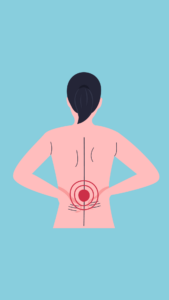
Lower back pain is a common complaint that can affect people of all ages. Understanding the potential culprits behind your discomfort is the first step in finding relief. Here are some key causes:
- Muscle strain: Straining the muscles or ligaments in your lower back, often due to improper lifting or sudden movements.
- Herniated discs: When the soft, gel-like centre of a spinal disc pushes through a tear in the tougher exterior, it can press on nearby nerves, causing pain.
- Arthritis: Conditions like osteoarthritis and ankylosing spondylitis can lead to lower back pain.
- Spinal stenosis: The narrowing of the spinal canal can exert pressure on the spinal cord and nerves.
- Scoliosis: An abnormal curvature of the spine may contribute to discomfort.
- Posture and lifestyle: Prolonged sitting, poor posture, and sedentary lifestyles can also strain the lower back.
Now that we’ve explored the causes, let’s delve into solutions that could bring you relief.
How can physiotherapy help alleviate lower back pain?
Physiotherapy is more than just a set of exercises. It’s a comprehensive approach to lower back pain management. Here’s how it can work wonders for you:
- Personalised treatment: A skilled physiotherapist will assess your condition and design a tailored plan for you. No one-size-fits-all solutions here!
- Pain relief: Physiotherapy techniques, such as manual therapy, can alleviate acute pain and help you regain mobility.
- Improving strength and flexibility: Physiotherapists can guide you in exercises that strengthen your core and back muscles, promoting better spinal stability.
- Preventing recurrence: By addressing the root causes of your pain, physiotherapy can help prevent future flare-ups.
- Education: Understanding the mechanics of your pain and how to manage it is empowering. Physiotherapists can educate you about your condition and its management.
- Non-invasive approach: Physiotherapy focuses on non-surgical methods, making it a safe and less invasive option for managing lower back pain.
What are specific exercises and stretches that provide lower back pain relief?
Let’s zoom in on some specific exercises and stretches you can incorporate into your daily routine for lower back pain relief:
- Child’s pose: This classic yoga pose is excellent for stretching and relaxing the lower back. Here’s how to do it:
- Start by kneeling on the floor with your big toes touching and knees apart.
- Sit back on your heels and extend your arms forward, bringing your chest towards the ground.
- Rest your forehead on the floor or a cushion if needed.
- Breathe deeply and hold the pose for 30 seconds to a minute.

Child’s Pose gently stretches the lower back, hips, and thighs, providing instant relief. It’s a great way to release tension and promote relaxation.
- Knee-to-chest stretch: This stretch is particularly effective in relieving lower back and hip muscle tension. Here’s how to perform it:
- Lie on your back on a comfortable surface, such as a yoga mat or a soft carpet.
- Place your hands behind your thighs or, ideally, grasp your shins just below the knees.
- Gently bring your knees towards your chest, using your hands to pull them closer.
- Hold this position for 20-30 seconds while breathing deeply.

The knee-to-chest stretch eases lower back tension and can provide relief for discomfort associated with conditions like sciatica.
- Seated forward bend: This stretch targets the lower back and hamstrings and can help relieve pressure on the lumbar region. Follow these steps:
- Sit on the floor with your legs extended straight in front of you.
- Keep your feet flexed, toes pointing towards the ceiling.
- Inhale and lengthen your spine.
- Exhale as you gently bend forward at your hips, reaching for your toes or shins.
- Try to maintain a flat back and avoid rounding your shoulders.
- Hold the stretch for 20-30 seconds while breathing deeply.

The seated forward bend increases flexibility in the lower back and hamstrings, reducing pressure and discomfort.
- Cat-cow stretch: This dynamic stretch helps improve the flexibility of the spine and provides relief for lower back pain. Here’s how to perform it:
- Start on your hands and knees in a tabletop position.
- Inhale as you arch your back, lifting your head and tailbone towards the ceiling (the “cow” position).
- Exhale as you round your back, tucking your chin and tailbone (the “cat” position).
- Alternate between these two positions, moving with your breath.
- Continue for 30 seconds to a minute.
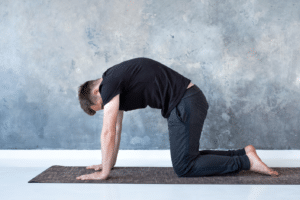
The cat-cow stretch mobilises the spine, promotes flexibility, and reduces pain in the lower back.
- Pelvic tilts: This exercise targets the pelvis and lower back to improve mobility and reduce tension. Follow these steps:
- Lie on your back with your knees bent and feet flat on the floor.
- Place your arms at your sides, palms facing down.
- Inhale and engage your core muscles.
- Exhale as you tilt your pelvis backward, pressing your lower back into the floor.
- Inhale and return to the neutral position.
- Exhale and tilt your pelvis forward, creating a small arch in your lower back.
- Continue this movement for 30 seconds, focusing on your breath and the tilt of your pelvis.
Pelvic tilts help strengthen the lower back, improve flexibility, and reduce discomfort by mobilising the lumbar region.
Incorporating these exercises and stretches into your daily routine, along with the guidance of a physiotherapist, can contribute to long-term lower back pain relief and improved spinal health. Remember to perform them gently and within your comfort level to avoid any further strain or injury. If you have specific medical conditions or concerns, it’s advisable to consult a healthcare professional or physiotherapist before starting any new exercise routine.
What are the key benefits of incorporating physiotherapy into my back pain management plan?
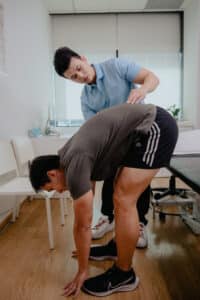
Physiotherapy isn’t just about exercises; it’s a holistic approach to managing your lower back pain. Here are the key benefits of making it a part of your plan:
- Pain relief: The foremost benefit of physiotherapy is the effective relief it provides for lower back pain. Skilled physiotherapists use a range of techniques, including manual therapy, targeted exercises, and modalities like heat or ice, to reduce pain. These methods not only address the symptoms but also work towards long-term pain management, offering you both immediate and sustained comfort.
- Improved mobility: Lower back pain often results in reduced mobility and range of motion. Physiotherapy focuses on addressing the root causes of your pain, which can include muscle imbalances, stiffness, or weaknesses. By targeting these issues, physiotherapists help you regain your range of motion and mobility. Whether it’s bending, twisting, or simply moving more freely, improved mobility is a significant benefit of physiotherapy.
- Customised approach: No two individuals are exactly alike, and neither are their pain experiences. That’s where physiotherapy shines. Each treatment plan is tailored to your unique needs and condition. Your physiotherapist will assess your specific pain triggers, mobility limitations, and overall health. This personalised approach ensures that you receive the most effective and appropriate care for your situation.
- Prevention: Physiotherapy goes beyond symptom management; it focuses on the underlying issues that contribute to your lower back pain. By addressing these root causes, physiotherapists aim to prevent future episodes of pain or discomfort. This proactive approach can significantly reduce the likelihood of recurring problems and empower you to enjoy a pain-free life.
- Education: Understanding your condition and the mechanisms that contribute to your lower back pain is a powerful tool in your pain management toolbox. Physiotherapists are not only skilled in providing treatment but also in educating patients. You’ll learn about your body, your condition, and effective self-care techniques. This knowledge empowers you to take an active role in managing and preventing pain.
- Non-invasive: Many people prefer non-invasive treatment options, and physiotherapy fits the bill. It is a minimally invasive approach to pain management that focuses on natural healing and improvement. Unlike surgical interventions, which may come with risks and downtime, physiotherapy offers a safer and more conservative path to relief. This makes it an attractive option for those seeking effective, non-surgical solutions for their lower back pain.
If you’re looking to regain control over your lower back pain and enhance your overall quality of life, physiotherapy is a holistic solution worth considering. Consult with a physiotherapist to embark on your journey towards a healthier, pain-free back.
What lifestyle changes complement physiotherapy exercises for a healthier back?
To complement your physiotherapy exercises and make them even more effective, consider incorporating these lifestyle changes:
- Ergonomic adjustments: Ensure your workspace and home are ergonomically designed to support good posture.
- Regular movement: Avoid prolonged sitting and incorporate short breaks for movement into your day.
- Healthy eating: A balanced diet can support your overall well-being, including your spine health.
- Stress management: Stress can exacerbate pain. Explore stress-reduction techniques like meditation and yoga.
- Adequate sleep: Quality sleep is essential for the body’s healing and recovery.
- Hydration: Staying well-hydrated can help with joint and muscle health.
Remember that a combination of physiotherapy exercises and these lifestyle changes can significantly improve your lower back pain management.
Empowering your journey to a pain-free back: The road to relief with physiotherapy
Lower back pain can be a daunting challenge, but with the right approach, you can regain control over your comfort and mobility. Physiotherapy, with its tailored exercises and comprehensive strategies, offers a path to relief that’s worth exploring.
Here at City Osteopathy & Physiotherapy, we are committed to helping you live your life to the fullest, free from pain and discomfort. With 5 clinics across Singapore and over 12 years of experience, we’ve helped more than 15,000 patients to get better and enjoy their best everyday. Book a consultation with us as we tailor an integrated plan to manage your back pain effectively.
FAQs
What precautions should I take when performing lower back exercises?
When performing lower back exercises, it’s essential to follow these precautions:
- Start slowly and gradually increase intensity.
- Listen to your body; if an exercise causes pain, stop immediately.
- Always warm up before exercising to reduce the risk of injury.
- Consult a physiotherapist to ensure you’re performing exercises correctly and safely.
How do physiotherapy exercises compare to other treatments for back pain?
Physiotherapy exercises stand out as a conservative, non-invasive approach to managing lower back pain. They focus on addressing the root causes of pain and promoting long-term relief, making them an excellent option for those seeking a holistic, non-surgical solution.


